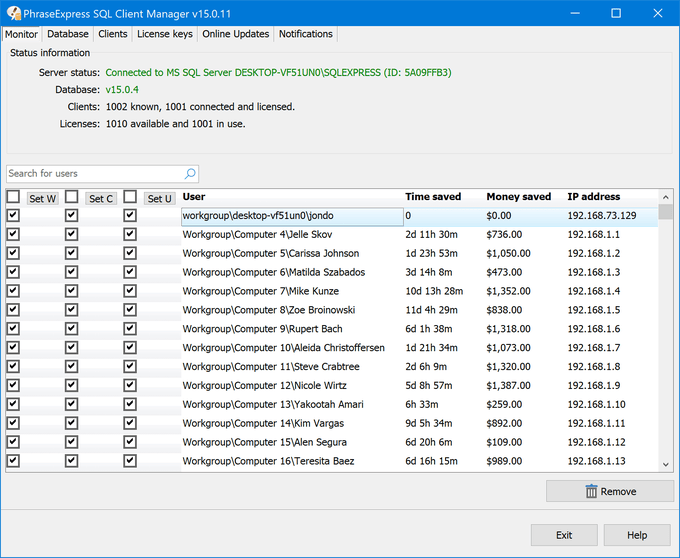

Type the following string with the keystroke: “ John Watts ”. On the third page of the Operation Parameters wizard you can specify the Keys parameter of the selected method:Ĭhoose the Constant from the Mode drop-down list. In our case, if we drag the glyph to the Notepad window caption and then release the mouse button, the following object will be selected by the wizard: “ Sys.Process("notepad").Window("Notepad", "Untitled - Notepad", 1)”. button, and when the Pick Object dialog appears, drag the target glyph ( ) to the desired object. In our case, It will be a string Sys.Process("notepad").Window("Notepad", "Untitled - Notepad", 1).Ĭlick Pick Object.
PHRASEEXPRESS SIMULATED KEYSTROKES FULL
Type the full name of the object in the first page of the wizard. Then you can specify an object to which keystrokes should be sent in one of the following ways: After the operation is dragged, TestComplete will display the Operation Parameters wizard. Add operations to the keyword test according to the following steps:Īdd the On-Screen Action operation to the test. Suppose you need to simulate a keystroke in a window, for instance, the “John Watts ” string needs to be typed in the Notepad window.
PHRASEEXPRESS SIMULATED KEYSTROKES HOW TO
Therefore, these methods are preferable to SetText in certain cases.īelow is the information on how to use the described methods to simulate keystrokes from different kinds of tests. However, the key pressing methods also ensure that the appropriate keyboard events are raised in the tested application and the associated event handlers, if any, are executed. The Keys, KeyDown and KeyUp methods, in their turn, simulate actual key presses in the object, taking into account the Key pressing delay project setting. Note that the SetText action changes the object text programmatically, so, it may take less time to execute. These methods also have the Delay parameter. LLPlayer.KeyDown and LLPlayer.KeyUp - simulate low-level pressing and releasing the specified key. For complete information on the format of the string of keystrokes, see the method description.ĭesktop.KeyDown and Desktop.KeyUp - simulate pressing and releasing the specified key by its virtual code. This string can include alphanumeric characters as well as special key codes ( Ctrl, Alt, F1, Tab and others). All of these methods have one parameter - a string of keys to be typed. The difference between different Keys methods is that OnscreenObject.Keys types in the specified onscreen object, while Desktop.Keys and Sys.Keys type in the currently focused object. OnscreenObject.Keys, Sys.Keys and Desktop.Keys - send key presses to the desired object.

You can simulate keyboard input from your tests by using the following methods:


 0 kommentar(er)
0 kommentar(er)
